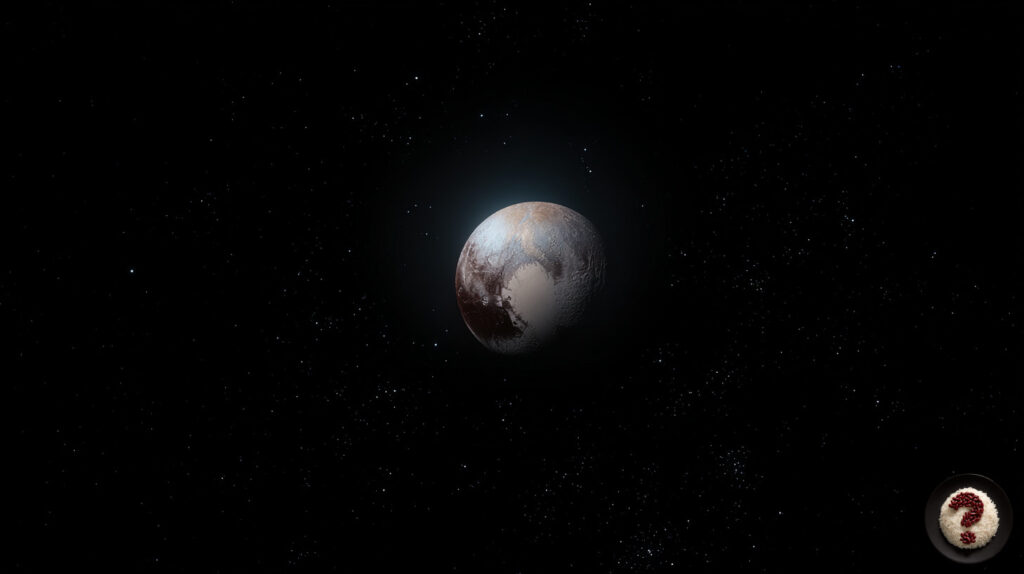
Once Upon a Time: The Sad Saga of the Dwarf Planet Pluto
Welcome to the Solar System’s most emotional story: Pluto’s struggle for “planet status”! We thought we’d pull this tiny celestial body aside for a serious chat, but decided to leave the seriousness behind and have a little fun. If you’re ready to wander through space—grab a coat, because the temperature on Pluto is around −230∘C.
Introduction: The Planet Problem
When Pluto was discovered in 1930 by a young astronomer named Clyde Tombaugh, we all rejoiced: “We have a new planet!” A new circle was added to classroom wall charts, and children memorized poems about “Nine planets.” Some even wrote poems dedicated to Pluto. (Though no one read those poems, the intent was what mattered.)
Pluto’s Early Days
It was small, but it was big in our hearts. Truly! In fact, there is a heart-shaped region on Pluto’s surface, appropriately named “Tombaugh Regio.” It’s like a salute to its discoverer and a nod to our emotional connection.
Then, Something Happened…
In 2006, the International Astronomical Union (IAU) gathered and said, “We might have been a bit too broad with this planet definition.” The result? Pluto was stripped of its planet status. Wait, what? This is like a kid winning class president and being removed a week later because the vote “didn’t count.” The whole world was a little upset, frankly.
But Why?
According to the IAU’s new definition, a celestial body had to meet three conditions to be classified as a planet:
- Orbit the Sun ✔️
- Have enough self-gravity to achieve a round shape ✔️
- Have cleared the neighborhood around its orbit ❌
Pluto stumbled on the third point. Essentially, they said, “It has too much space debris in its neighborhood; it hasn’t established order.”
Pluto’s Reaction (Imagined)
If Pluto could talk, it would probably say: “Look, I’ve been in this system for 76 years. I thought I was a planet. What am I now? I’m not an asteroid, not a moon, not an apprentice. What did you make me?”
What Does “Dwarf Planet” Mean?
After 2006, Pluto was slapped with the label “Dwarf Planet.” This is a bit like saying, “You’re big, but not as big as us.” It’s heartbreaking, like being rejected from the high school basketball team and being told, “You can be the manager.” Pluto may be short in stature, but it has a big heart!
The Public Response
Online campaigns started, and T-shirts were printed: “Pluto is My Planet!” People revolted. Even NASA employees were divided. Some said, “That’s just how science works,” while others shed tears, insisting, “But he’s our Pluto.” (Am I exaggerating? Perhaps a little.)
Pluto’s Scientific Wonders
Joking aside, Pluto is a fascinating place. In 2015, the New Horizons spacecraft provided the first close-up photographs. It was discovered to have mountains, plains of ice, a blue atmosphere, and even a possible subsurface ocean. In short: tiny but full of character.
Planet or Not? Who Cares?
Call Pluto whatever you want—planet, dwarf, or “the weird kid in the neighborhood”—it’s still quietly orbiting the Sun. We place the labels, but the universe doesn’t care.
Conclusion: Always a Planet in Our Hearts
Pluto may not be an official planet, but it still holds its 9th place in our hearts. Because sometimes, there are things more important than science: memories, emotions, and a little bit of stubbornness.
Final Word:
If you ever find yourself wandering through the Solar System, stop by Pluto. It may be small, but it will give you a big, cold (but loving) welcome. Remember, some things are measured not by size, but by the number of turns they make in orbit.
